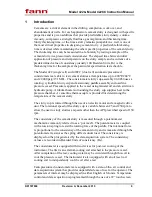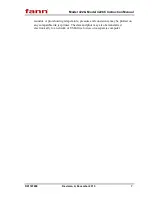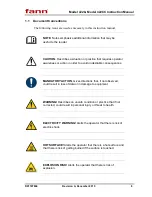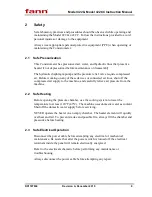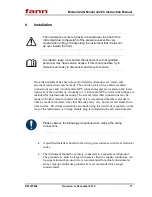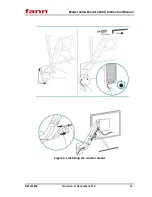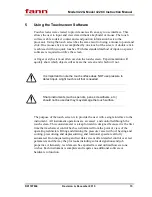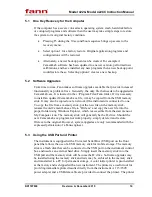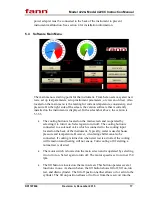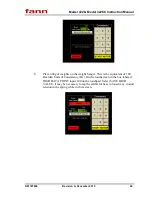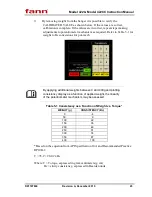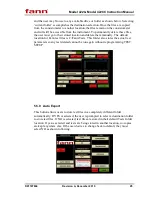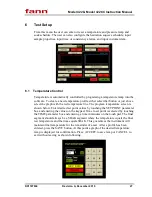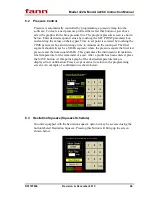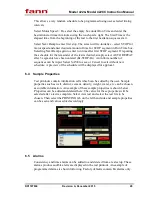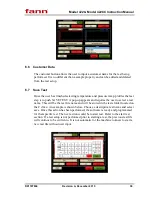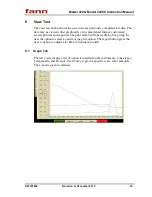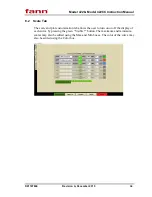
Model 422 & Model 422CC Instruction Manual
D01187869
Revision A, December 2015
20
5.5.2 Calibrating Pressure
Pressure calibration must be performed by a qualified individual that has a certified
pressure calibration device. When the screen as shown above appears, connect the
pressure calibrator to the top of the pressure vessel using a 9/16-18 high pressure
nut. Enter a lower-limit pressure value on the calibrator. Touch the Enter Low
Value parameter box shown above and then enter the correct pressure value for the
low data point using the touchpad at the right. The raw value is the voltage signal
read directly from the I/O hardware and it should change as the calibration signal
changes. When the low data point has been entered, press the SAVE LOW VALUE
button. The user can now enter the high data point on the calibrator and then again
on the touchscreen as before. The raw value should be different for the low and
high data points or there will be a computation error. After the high data point has
been established, press the SAVE HIGH VALUE button. We recommend using a
low value of house air pressure and a high value of 20,000psi or near maximum
operating pressure. The user can now vary the calibration signal and see how the
calibrated signal compares with that of the calibration device in the VERIFY NEW
CALIBRATION box. If the signals compare favorably, press the SAVE button to
save the calibration. The calibration values will be stored in a configuration file and
take effect upon saving and exiting the Instrument Setup menu.
5.5.3 Calibrating Consistency
Consistency should be calibrated by using the consistency calibrator kit. Kit
includes calibrator base, weight set and hanger, wedge with cord, and 3 clip wiring
harness. This device applies a known torque to the potentiometer mechanism
spring, allowing the readout to be observed on the screen. Calibration of the
potentiometer mechanism is described in the example below. It is recommended
that consistency be calibrated at minimum once a month.
1.
Connect the calibrator base near the front edge of the consistometer using
the two holes, nuts and bolts.

